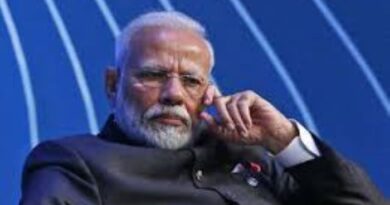Muharram, Majalis, Azadari & Marsiya Nigari kay Shahenshah Mirza Salamat Ali Dabeer
You are Here: Tweet, Like, Share, Comment, Subscribe…be the Voice of Free Press!
By Ashfak Khan, Edited by Adam Rizvi: The India Observer, TIO: Mirza Salamat Ali Dabeer ( Urdu: مرزا سلامت علی دبیر ) was a leading Urdu poet who excelled and perfected the art of Marsiya writing. He is considered the leading exponent of Marsiya Nigari or marsiya writing along with Mir Anis.
He started reciting marsiya since childhood during Muharram ceremonial gatherings called majalis (singular-majlis). He started writing poetry under the tutelage of Mir Muzaffar Husain Zameer. Dabeer himself was an erudite scholar of his time. He migrated from Delhi to Lucknow, where he found a suitable environment to develop and demonstrate his skills in marsiya writing. According to Maulana Muhammad Husain Azad in Aab-e-Hayat quoting Tazkira-e-Sarapa Sukhan, there is confusion regarding his father’s name because of two different names mentioned in Tazkira-as-Ghulam Husain /Mirza Agha Jan Kaghazfarosh. Mirza Dabeer died in Lucknow in 1875 and is buried there.
Also, Read, Tweet & Share: Ramzan – fasting, family, food and much more
 Works
Works
According to Muhammad Husain Azad in Aab-e-Hayat: Mirzā Sahib died on the 29th of Muharram, A.H. 1292 [1875-76], at the age of 72 years. In his lifetime he must have written at least three thousand elegies. Not counting his salāms and nauhas and quatrains. He wrote a dotless elegy (be-nuqta) of which the opening verse is:
“Hum tale-e-Huma Murad hum rasa hua”
Also, Read, Tweet & Share: Aftermath of the Battle Of Karbala
Meaning:
“My far-reaching imagination has the same fortune-star as the Huma”
In it, he used (the dotless) Utārid or Atarid Jupiter instead of Dabeer for a pen-name. And there’s no doubt that with him elegy composition in India reached its conclusion. Now no such time will come, nor will such accomplished persons be born (Frances W. Pritchett translation).
Although Dabeer’s poetic expression found expression in the genre of marsiya but he made use of other forms of Urdu poetry, viz., salaam and rubai, he seldom wrote ghazals too. A couplet from one of his salaams is a clear example of his genius comparable to Ghalib:
“Hurr Fida pyaasa jo Shah par ho Gaya
Ai salami, qatra tha samandar ho Gaya!
Naqaash naqsh, Kaatib o Khat, Baani o Bina,
Bood o Nabood, Zaat o Sifat, Hasti o Fana,
Aadam Malak, Zameen Falak, Gard e Kimiya,
Duniya o Deen, Hadoos o Qidam, Banda e khuda,
Sab, Shahid e Kamal e Shahe Mashraqain hain,
Jab Tak Khuda Ka Mulk hai, Malik Hussain hain.”
Also, Read, Tweet & Share: Lucknow Shias up in arms, force ticketed show on Moharrum to be cancelled
Dabeer and Anis Rivalry
Anis and Dabeer rivalry is the most debated and talked about rivalry in Urdu literature. Their rivalry led to the development of two distinct styles/schools of Marsiya-nigari or marsiya writing at its inception. The staunch supporters of each of the masters identified themselves as “Aneesiya” and “Dabeeriya”. The impact of rivalry was so intense that the followers could neither free themselves from their influence nor surpass either master’s brilliance. Although the populace divided themselves into two separate groups the two poets remained at cordial terms and acknowledged each other with great respect. When Anis died in 1874, Dabeer penned the following couplet as a tribute to the departed poet:
“Aasman Be Mah-i-Kamil Sidrah Be Ruhul Amin
Toor-i-Sina Be Kalimullah Mimbar Be Anis”
Also, Read, Tweet & Share: Assassination of Imam Ali (as)
Legacy
Dabeer, along with Anis, left an everlasting influence on Urdu literature and marsiya in particular. Marsiya, in its content and matter, allowed the two masters to demonstrate their artistry and command of Urdu language and idiom. At the same time epical nature of marsiya covered and dealt with the entire range of emotions and ideas. It has both mystical and romantic appeal. All the contemporary and succeeding generations of poets who adopted marsiya as the genre of poetic expression and also others who took to other forms of poetry found it difficult to break away from the trends and standards set by these two masters. The names of Dabeer and Anis are inextricable whenever Urdu Marsia is mentioned. In short, marsiya attained its zenith under the poetic genius of Anis and Dabeer. Marsiya became synonymous with the names of these two masters and also the form-musaddas- adopted by them became synonymous with the identity of marsiya. Dabeer along with Anis influenced two major aspects of the socio-cultural life of the Indian sub-continent. One is literature and the other is azadari tradition of the sub-continent.
Also, Read, Tweet & Share: Terrorism is caused by ‘distortion of religion’ and ‘misguided belief’: Swaraj tells OIC
For more visit:
Muharram पर दास्तानगो Himanshu Bajpai की ज़ुबानी सुनिए Lucknow के शायरों का कलाम और किस्से
Muharram पर दास्तानगो Himanshu Bajpai की ज़ुबानी सुनिए Lucknow के शायरों का कलाम और किस्से
Posted by The Lallantop on Monday, September 9, 2019
Mirza Salamat Ali Dabeer’s Works:
List of Marsiah by Dabeer:
Kis sher ki Amad hai ki Run kaanp raha hai
Dast-e-Khuda Ka Quwat-e-Bazoo Husain hai
Jab Chaley Yasrab Se Sibte Mustafa (SAW) Soo-e-Iraaq
Bilqees paasbaan hai ye kiski janaab hai
Paida Shua-E-Mehar Ki Miqraaz Jab Huee
Curated by Humra Kidwai
First Published on: Sep 7, 2019
Articles written by contributors have different viewpoints. The views expressed in the articles are the author’s own and not necessarily supported by TIO, The India Observer its affiliates, staff, or the management. Our Articles can be reproduced, with the following conditions, (1) No alteration to the content, (2) Visible, and full credit is given to the Author & Editor. (3) Citing, The India Observer, TIO. In the case of online or electronic media, a link to the original article must be given. Rules are strictly enforced. Any questions, email the Editor at: Mediaiss@gmail.com Or TheIndiaObserver@gmail.com




